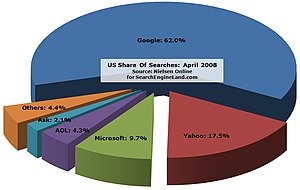A lot of things factor into pricing. Oddly, cost of creation isn't necessarily a primary consideration. Just because you can make something for a dollar doesn't mean you should sell it for $1.50. Particularly if a lot of people are willing to pay $5 or more. I know that may sound dishonest but under most circumstances it isn't. You aren't doing yourself, your employees or in the long term your customers any favors when you do a lousy job of pricing your products.
Getting back to the topic at hand, why does Microsoft charge so much more for their upgrades? The most obvious answer is a variation on "because they can". People pay for perceived value and that value can come from a number of different factors.
- Cost: My ability to pay is going to be the single most significant factor in a buying decision. I may choose a cheaper solution if I don't have the ability to pay for my preferred choice. My perception of what is a reasonable cost will also be impacted by my ability to pay. On the flip side, if I see something really nice that costs less than I expect I might decide there is something wrong with the product. I know it may seem odd that cost plays a part in peoples perception of value but it really does.
- Utility: If a product solves a problem I have it has value. That value will be based on
- The importance of that problem to me and
- The effectiveness of the solution
- Prestige: Brands and products that are perceived as cool or desirable will sell for more. Sometimes a lot more
Cost
Clearly Apple wins here. But it's not that simple. MacOS only runs on Apple hardware. Yes, if you're cleaver you can get it to run non Apple hardware but that is unsupported. If you own a Mac you do have the ability to run Windows 7 however and many Mac owners end up purchasing a copy to run Windows software under emulation or in an alternate boot partition. This leads me to the next category.
Utility
There are a lot of different ways we could look at utility here. If you don't own an Apple PC and you don't want to go the hackintosh route you're don't get to choose MacOS. There are two sides to that coin though. You also don't have to pay a premium for Apple's hardware. You can choose from a nearly limitless number of vendors and configurations. You can mix and match to your heart’s content. In short you are not locked in. That freedom comes at a cost though.
Microsoft has a much harder road to travel than Apple. Apple only has to support a very limited number of hardware configurations. Microsoft has to deal with a nearly limitless combination of possible configurations. People who criticize Microsoft and praise Apple in the area of stability aren't being inaccurate but they are being unfair.
Support is another factor. Apple tends to fully support only the current and previous release of MacOS. Microsoft on the other hand is still fully supporting XP and only dropped support for Windows 2000 about a year ago. If you're into the latest and greatest technology you might say "So what" but in some market segments this is an important consideration.
Microsoft likely incurs additional costs because of their longer support period but they also create more utility for their customers. This likely explains the bulk of the price difference between MacOS 10.6 and Windows 7.
Prestige
I don't think it's difficult to figure out which of Apple and Microsoft are perceived as cooler. Windows Phone 7 and the Zune are only two examples that show most people prefer Apple products to Microsoft's offerings.
Another Factor
There is another factor I haven't taken into consideration. Business models also play a part. Microsoft is primarily a software company. Apple on the other hand uses software to sell hardware. MacOS is a significant point of differentiation for Apple. While their hardware does offer innovative features it is primarily the user experience (in this case the software) that allows them to get much higher margins than anyone else for PC's and laptops. Encouraging updates lowers the pressure on Apple to support ancient versions of their operating system and encourages users to adopt new versions with new functionality more quickly.
Apple also releases new operating system versions much more frequently than Microsoft. This in turn means they get to amortize the costs of their OS development over more releases. Microsoft really needs to look at accelerating their OS release cycle and there are signs this is going to happen.
Other than keyboards, mice and Kinects Microsoft isn't a hardware company. Their OS primarily serves as a platform for their various application offerings with Office being the most important. The Office suite is the gold standard today. This is likely one of the reasons that Microsoft was reluctant to support a full function version of Office on MacOS for a long time.
Conclusion
Based on the above ramblings I'd say that we can explain Microsoft's higher pricing for Windows 7 on two primary factors.
- Higher utility because of a wider range of hardware support/choices
- Higher utility because of the longer product support window
- Higher utility over previous versions since OS releases tend to be much further apart
Point two is complicated by the fact that for many individuals and companies Vista essentially did not exist. The gap between Windows XP and Windows 7 is far more substantial than the gap between MacOS 10.5 and 10.6.
Image by . SantiMB . via Flickr
Image by . SantiMB . via Flickr































